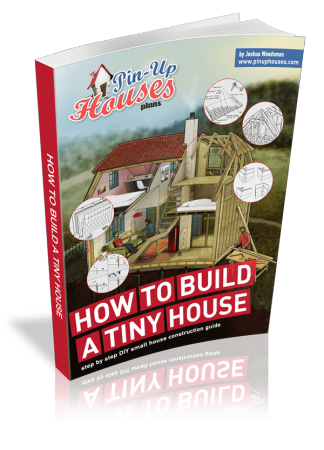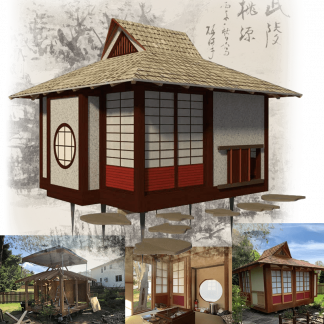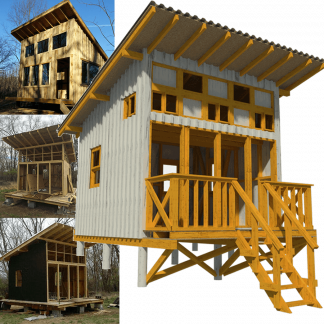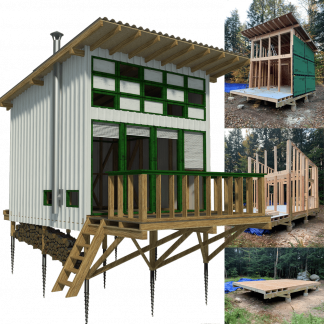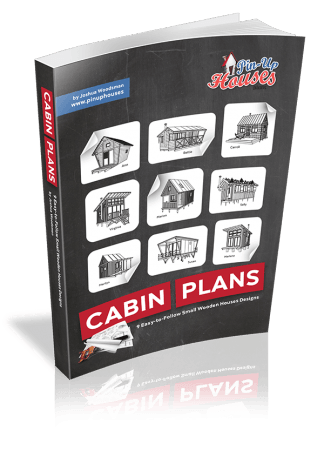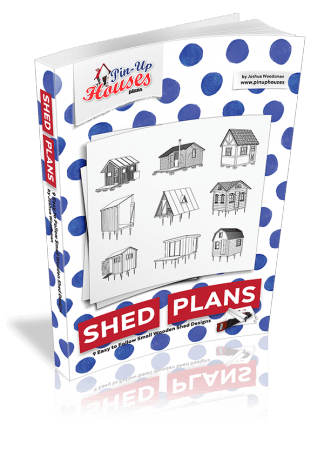Why Insulation Matters in Tiny Homes Year-Round
A well-built tiny house should feel comfortable in every month of the year. Whether the air outside is icy or sweltering, insulation plays a major role in keeping indoor temperatures stable. In small spaces, the wrong materials or poor installation can quickly lead to drafts, condensation, and higher energy bills. Choosing the right approach from the start helps prevent these problems and makes daily life more pleasant in any season.
1. Choose the Right Insulation Material for Your Climate
Different climates call for different insulation strategies. In cold regions, materials with a high R-value are essential for retaining heat, while in hot areas, reflective and heat-resistant options can help reduce cooling costs. For tiny houses where wall thickness is limited, rigid foam insulation offers strong thermal performance without taking up much space. It’s lightweight, resists moisture, and can be cut to fit unusual shapes, which is especially useful in custom or mobile builds.
2. Seal Gaps and Eliminate Thermal Bridges
Even the best insulation won’t perform well if air can slip through gaps in the structure. Common trouble spots include window frames, door jambs, loft edges, and corners where walls meet floors or ceilings. Filling these spaces with caulk or weatherstripping helps maintain a consistent indoor temperature. Adding continuous insulation can also reduce thermal bridges, which are areas where heat or cold passes more easily through framing materials than through insulated sections.
3. Insulate Floors for Year-Round Comfort
Cold floors can make a small home uncomfortable even when the air temperature feels right. In winter, uninsulated floors allow heat to escape, while in summer they can transfer heat from the ground into the house. Adding insulation beneath the floor helps maintain a steady temperature and reduces the strain on heating or cooling systems. For mobile tiny homes, lightweight materials are best to avoid unnecessary weight.
4. Upgrade Windows and Doors
Windows and doors are major sources of heat loss in winter and heat gain in summer. Installing double- or triple-glazed windows improves insulation and reduces drafts. Well-insulated door panels and tight-fitting frames also improve efficiency. For more technical details on window performance, the U.S. Department of Energy offers clear guidance on selecting options suited to different climates and budgets.
5. Don’t Forget the Roof and Loft Spaces
In a tiny house, heat naturally rises toward the roof and loft areas. Without proper insulation, these spaces can become uncomfortably warm in summer and lose heat in winter. Adding insulation between rafters or installing insulated roof panels can help maintain a steady indoor temperature. Ventilation is equally important, as air circulation in the loft can prevent moisture buildup and improve overall comfort.
6. Use Reflective Barriers in Hot Climates
When summer temperatures climb, reflective barriers can help block radiant heat from entering your home. These materials, often made with foil-faced surfaces, reflect heat away before it can be absorbed by walls or roofs. Installing them beneath roofing or on sun-facing walls can noticeably reduce cooling needs. They work best when combined with other insulation types for year-round performance.
7. Combine Passive Design with Good Insulation
Insulation works best when paired with other strategies for managing heat and airflow. Strategic window placement can capture sunlight in the winter and allow cross-ventilation in the summer. Roof overhangs, shade structures, and natural landscaping all help regulate temperature without added energy use. You can learn more about energy-efficient small house design and how it benefits compact homes through smart layout and material choices.
Final Thoughts on Tiny House Insulation
Insulating a tiny house well means more than staying warm in the winter. The right approach keeps the space comfortable year-round, lowers energy costs, and prevents moisture problems that can damage the structure. By choosing suitable materials, sealing gaps, and combining insulation with thoughtful design, even the smallest homes can offer consistent comfort in every season.


